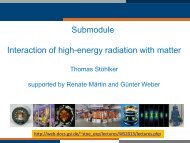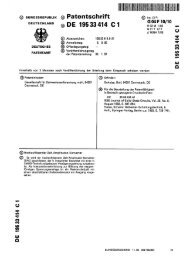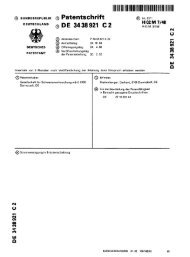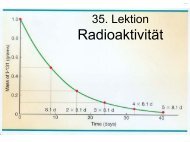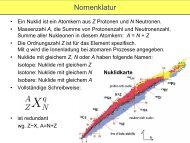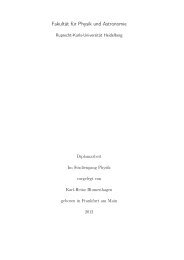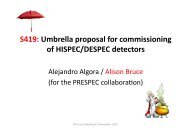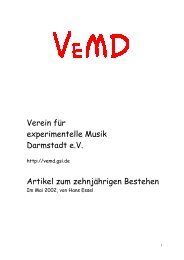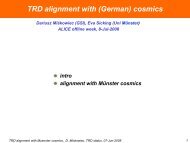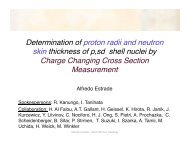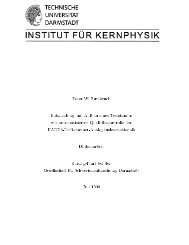doctoral thesis
doctoral thesis
doctoral thesis
Create successful ePaper yourself
Turn your PDF publications into a flip-book with our unique Google optimized e-Paper software.
8 CHAPTER 1. INTRODUCTION<br />
Displaced Vertex: Often it is important to identify charged particles that originate<br />
at points a short distance from the collision point rather than at the collision<br />
point itself (B-, D- or τ-tagging). This is achieved with high spatial resolution<br />
detectors placed around the collision point.<br />
Neutrinos: The presence of the not directly detectable neutrinos can be infered through<br />
momentum conservation.<br />
A particle will not be evident until it either interacts with the detector in a measurable<br />
fashion, or decays into detectable particles. Despite their differences the detector<br />
types that were just described all rely on the same basic principles. Particle detectors<br />
make visible the effects that the particles have on their surroundings. In the next section<br />
we will give a brief summary of the different ways in which particles interact with<br />
matter.<br />
1.2 Interactions of Particles with Matter<br />
In the last section we mentioned that a particle detector has to be able to reveal the<br />
presence of eight particles (and their corresponding antiparticles): electrons, muons,<br />
protons, neutrons, photons, charged pions, charged kaons and neutral kaons. These<br />
particles leave characteristic trails as they lose energy when they travel through a material,<br />
be it a gas, a liquid or a solid. This energy loss can be of different forms:<br />
• Electrically charged particles lose energy by ’colliding’ with atomic electrons<br />
of the material (excitation, ionization) and by the emission of bremsstrahlung<br />
when they scatter off the nuclei.<br />
• Strongly interacting particles can in addition lose energy through hadronic interactions<br />
(inelastic nuclear collisions, nuclear excitation, splitting).<br />
• Photons lose energy by Compton scattering with atomic electrons or they disappear<br />
completely in the processes of Photo Electric Effect and pair production.<br />
In this section the basic interaction mechanisms of particles with matter are summarized<br />
briefly. The energy loss of charged particles due to ionization and excitation<br />
is fundamental to most particle detectors – and the RPC, that is the topic of this <strong>thesis</strong><br />
– and is therefore described in more detail.



